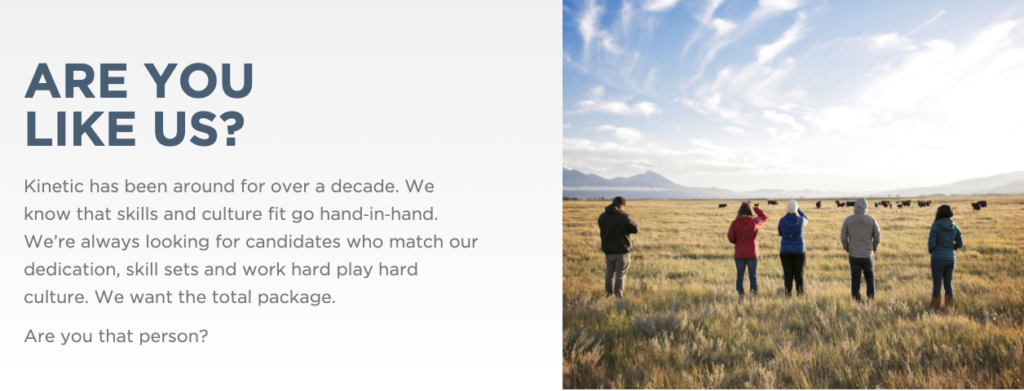The Key to Attracting and Recruiting Great Employees
Rob Seas Content Strategist & Copywriter
While U.S. economists predict record growth in 2021 and beyond, businesses around the country are reporting severe labor shortages. Why are employers having trouble filling jobs in a booming economy? How can they attract and retain the employees needed to sustain their businesses and take part in the economic growth?
Prior to COVID-19, when U.S. unemployment remained at record lows, HR experts focused on how companies could achieve hiring and retention goals in a historically tight labor market. Their conclusion: create an empathetic culture. They cited research showing that 85 percent of employees say empathy is critical to workplace satisfaction. In fact, six out of 10 employees would take less pay for an empathetic employer and 77 percent would work longer hours, according to a Businessolvers survey of 1,128 employees.
In April of 2020, unemployment numbers in the United States bottomed out at nearly 15 percent, a low not seen since 1940. Since then, the unemployment rate has dropped to less than half that number (6.1 percent in April 2021), yet we’re nowhere near full employment.
A fundamental shift occurred as a result of the pandemic and it makes empathy more vital than ever. Everyone participating in the U.S. economy was forced to pause and inhale deeply. We couldn’t help but reflect on how we’d been living and working. The way businesses treated employees during the crisis was revealing. Those with empathy worked creatively to throw their employees a lifeline in uncertain times. Others took advantage of government relief cash and focused on their bottom line, viewing workers as an expendable commodity. The difficult times illuminated how employers viewed one of the most important assets of their business.
Now, more than ever!
It’s no wonder that a significant number of employees decided that they would look for a better situation when the economy rebounded. In this tight post-pandemic labor market, employers need to reexamine their business to ensure that empathy permeates their culture.
But how to achieve empathy? It comes naturally to some. Others need to make a conscious effort to practice and model empathy. The bottom line: we all want to be treated with kindness and respect in our business and personal relationships. Those relationships that bear these empathetic traits result in stronger bonds and greater loyalty from both employees and customers.
Prior to COVID-19, HR Dive, a leader in reporting trends shaping human resources, interviewed Dr. Adam Waytz, professor of management and organizations at Northwestern University’s Kellogg School of Business about empathy. Below are highlights of the interview (read the full article).

“Empathy literally requires you to obtain another’s point of view — taking the extra step to look beyond what you want and need to understand what someone else may want or need, and why,” said Dr. Waytz. “We often think that the best way of doing this is to imagine what others want, but leaders don’t spend enough time simply asking employees what they want and then listening.”
“Awareness of how communication happens, combined with a basic understanding of different generational needs, can often overcome obstacles to empathy,” added Dr. Waytz. “There are many factors at play that drive low employee engagement and satisfaction. But a big one is that it comes down to employees feeling undervalued and misunderstood. People want to be treated as more than the product of their labor, or as a means to an end, the company’s bottom line.
People want to feel they are part of something bigger than themselves and the workplace is unique in its ability (or failure) to create this sense of belonging. Get empathy right and you can expect lasting, productive relationships throughout your community. It’s not just the right thing to do — it’s good business!
It turns out that customers also sense and relate to empathetic businesses. Create a culture of empathy in your business and you’ll find your employees will model that culture with customers in a virtuous cycle. And the benefits don’t end there. Leaders with empathy better understand what motivates employees, which builds trust, teamwork and collaboration within an organization. This in turn unleashes creativity.
What can you do to build and communicate empathy?
There are a variety of ways to build empathy in your culture. Most center on how you communicate with prospective and current employees. Empathy is reflected both overtly and subtly in every engagement. Look closely at your communications plan and strategy. Does your messaging reflect and respect their reality and point of view? Make time for one-on-one conversations when possible. Ask questions — but listen more than you speak.
When hiring
Consider a “careers” microsite with photos and videos that highlight current employees to reflect the empathetic culture you’ve worked hard to foster. Such sites are set apart from consumer sites to speak directly to recruits. They underscore a commitment to human resources and allow you to focus exclusively on company culture, including benefits, training and employee testimonials.

Current Employees
Encourage open communication. Open communications are critical in building empathy. When your team is free to communicate issues, successes and challenges, you will maintain a clear understanding of their situation. It’s much better when employees are able to speak up, rather than staying silent. This is especially important if your employees work remotely all or part of the time. Find ways to engage them through apps and social media. Over communicate so that they feel included and in the loop.
Transparency and honesty in the workplace is an important hallmark of empathy.
Share your shortcomings and mistakes along with successes. Acknowledging your vulnerability tells your team they’re allowed to make mistakes, too. It’s normal to feel lost or overwhelmed at times. By sharing the good and bad, you build a sense of belonging and foster a team mentality.
The need for empathy in corporate culture is greater than ever. If you as a leader can help employees recover from the negativity inherent in living through COVID-19, there will be substantial benefits. In short, treat your employees exactly the way you treat customers. Without great employees, you won’t attract and keep customers.
Let Kinetic conduct an empathy audit of your business. We are well-versed in identifying opportunities to improve employee communications and messaging to enhance your connection with and understanding of your employees.
Rob Seas
Content Strategist & Copywriter
Rob graduated from Syracuse University with a degree in Journalism, held a variety of editorial positions across the country and has worked as a freelance web developer for companies large and small, ranging from startups to international corporations like Visa, The Nature Conservancy, and Levi Strauss & Co. before joining Kinetic Marketing in 2021.
Read more about Rob

